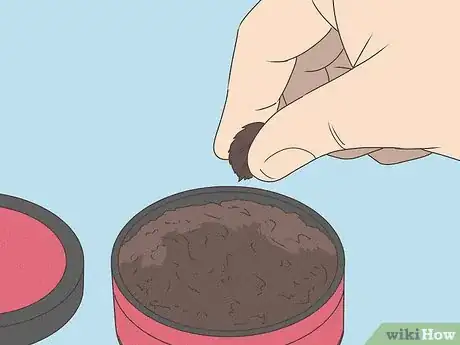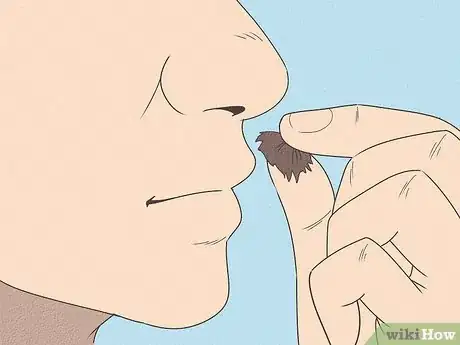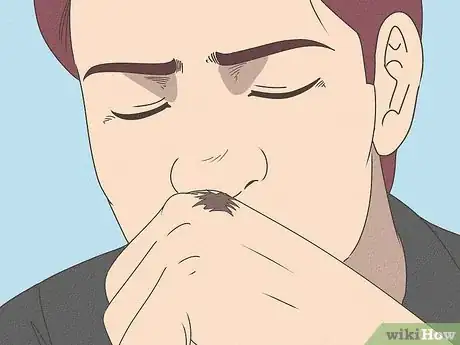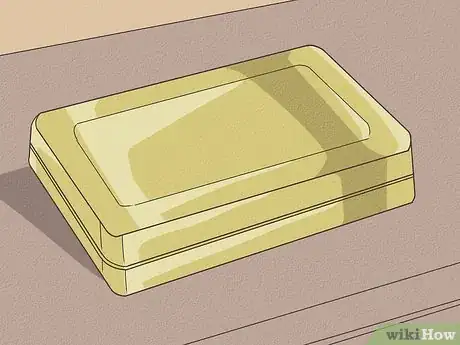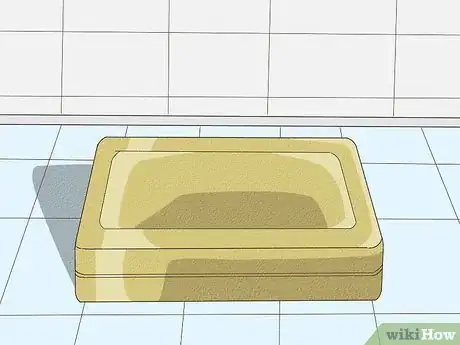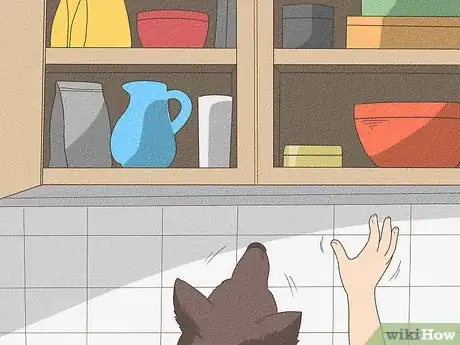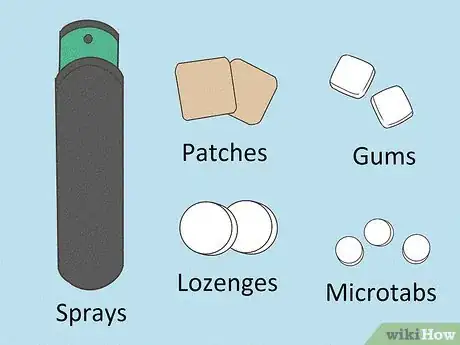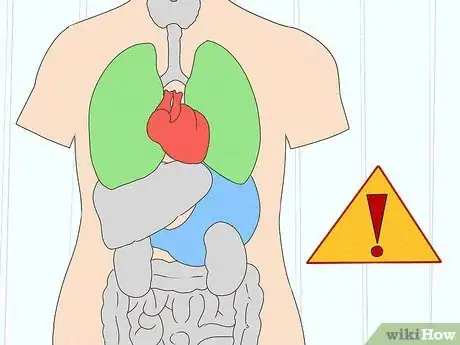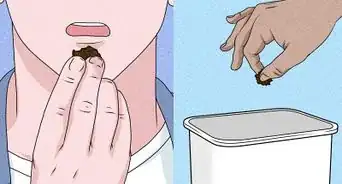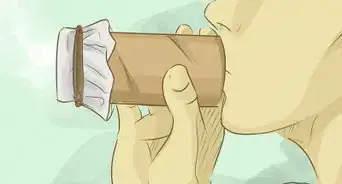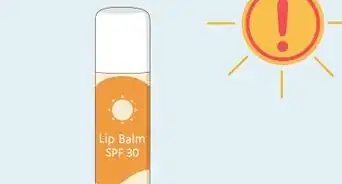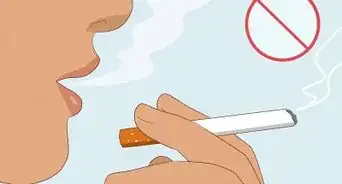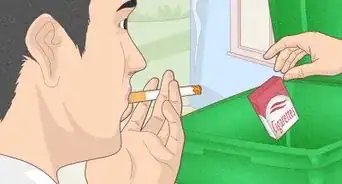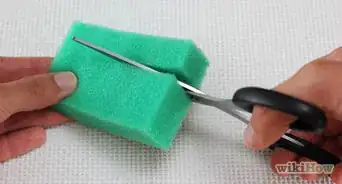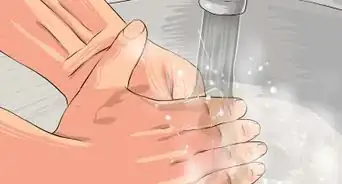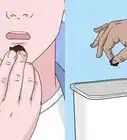This article was co-authored by wikiHow Staff. Our trained team of editors and researchers validate articles for accuracy and comprehensiveness. wikiHow's Content Management Team carefully monitors the work from our editorial staff to ensure that each article is backed by trusted research and meets our high quality standards.
wikiHow marks an article as reader-approved once it receives enough positive feedback. In this case, several readers have written to tell us that this article was helpful to them, earning it our reader-approved status.
This article has been viewed 444,839 times.
Learn more...
Snuff is a form of finely ground smokeless tobacco that many enjoy today as an alternative to cigarettes. Many people choose snuff as a means to gradually quit tobacco products. Others prefer a smokeless method of consuming tobacco, and want to minimize secondhand smoke exposure to those around them. There are many ways to use nasal snuff. However, snuff contains nicotine and is therefore addicting. While many believe snuff to be less taxing on your health than tobacco, there are many health risks associated with the use of nasal snuff.
Steps
Using Snuff
-
1Use small portions. Take snuff in small portions. There is no need to inhale a large amount of snuff in one sitting. In fact, doing so could irritate your nose and cause light-headedness. Stick to balls of snuff that are smaller than the size of a pea.
-
2Pinch the snuff and inhale. Snuff is usually sold in tobacco stores in small boxes. Most people inhale snuff by placing it between their thumb and forefinger. You would then place one nostril near the snuff and gently inhale.
- You are not trying to snort the snuff and get it deep into your nasal cavity. The goal is to inhale enough to get the snuff near the front of your nose.
- Try to inhale gently, absorbing the scent of snuff.
- If holding snuff between your thumb and forefinger is uncomfortable, you can use any other two fingers. For example, you could pinch snuff between your ring finger and thumb instead.
-
3Use a snuff bullet. A snuff bullet is a small, metallic bullet-shaped device designed for snuff users. You would place a small amount of snuff into the bullet and then inhale throughout the day. You can use a snuff bullet throughout the day without bothering others, which is its main advantage. It also makes for a nice storage container for snuff.
- You usually fill the snuff bullet about 3/4 of the way full. This should provide you with enough snuff to snort safely.
- Tap the bottom of the snuff bullet three or four times. The bottom is the less slender end of the bullet, that does not have an opening. This allows the snuff to move to the surface.
- Place the open end of the bullet in your nose. Angle the bullet forward slightly. When you inhale, you want the snuff to go into your nose but not up your nasal cavity.
- Sniff lightly until you feel some of the snuff settling into the tip of your nose. You will probably feel a slight burn, especially if this is your first time using snuff.
-
4Place the snuff on the back of your hand. Many snuff users advocate for putting snuff on the back of their hands to use. You can tap a small amount of snuff onto the back of your hand, lean down, and inhale. If you're outdoors, snuff could blow away in the wind using this method. It also may be cumbersome to use snuff like this is in a social situation.
-
5Inhale slowly. When inhaling snuff, go slow. You do not want to snort snuff into your nasal cavity. Only inhale with enough force to gently lift some of the snuff into your nose. This should be enough to provide you with a light buzz, similar to the buzz you'd get from a cigarette.[1]
-
6Expect some sneezing. It takes awhile to get used to the sensation of snuff. Therefore, expect some sneezing early on. It's not uncommon to sneeze more than once after using snuff for the first time. Keep tissues on hand when you first start using snuff. After awhile, sneezing should become less of an issue.
- If you're sneezing or coughing excessively after using snuff, you may have inhaled it too far into your nose. Remember, snuff should stay in the front of your nostrils. It should not be snorted too far back. If you cough or sneeze excessively after using snuff, try to inhale with less force next time.
Storing Snuff
-
1Invest in a snuff box. A snuff box is a small storage container sold at many tobacco stores. It's purpose is to store snuff when you're not using. Snuff boxes are often easy to keep in your pocket or purse, so you can bring snuff with you when you go out.
- Snuff boxes vary greatly in price. Some are considered collector's items, and may be quite pricey. Others are less expensive and used as a basic storage tool. If you're just using a snuff box as a place to store your nasal snuff, you can opt for a cheaper, more practical box.
- In the event you don't want to buy a snuff box, any small, sealable container can serve as a snuff box. You could use a small Tupperware container, for example.
-
2Store in a cool, dry place. Snuff can last a long time when stored correctly. Choose a cool, dry place in your home. For example, you can store snuff in your basement if it tends to be colder there. You could also store snuff in a high drawer in your kitchen, where heat from the stove is unlikely to affect your snuff.
-
3Keep out of reach of small children and pets. Snuff is not safe for children or pets, who may inadvertently eat the product. Make sure to store your snuff in a place where children and pets will not find it. Keep it in a high drawer or a place in your bedroom that's off-limits to children and animals.
Understanding the Risks
-
1Be careful when using snuff to quit tobacco. Many people use snuff as a way to transition away from tobacco altogether. You do not inhale snuff, and some studies indicate this makes it less addicting or dangerous than tobacco products. However, the results of such studies are debatable. If you want to use snuff to transition off of tobacco products, you should talk to a doctor first. Many doctors advise against using snuff to quit, as this may just create another bad habit.
- Instead of snuff, some medical doctors may prescribe nicotine replacement sprays, patches, pills, or gums. Talk to your doctor about your options before settling on snuff as your route to quit.[2]
-
2Learn about the health risks. Many people believe nasal snuff does not come with the health risks associated with smoking. However, understand that snuff has similar health risks to tobacco. It increases your risk for heart disease, stroke, cirrhosis, all cancers, including lung cancer, and respiratory and digestive diseases. The risks are arguably slightly lower than smoking cigarettes, but still exist for smokeless tobacco products like snuff.[3]
-
3Recognize signs of tobacco dependency. Nasal snuff contains nicotine, which is a physically addictive substance. Recognize the signs of nicotine dependency. If you are displaying these signs, you may want to reevaluate your use of nasal snuff.
- You can become dependent on nasal snuff, making it difficult to quit. You may try to quit, but find you are unable to.
- If you stop using snuff for a few days, you may experience withdrawal symptoms like irritability, strong cravings, anxiety, low mood, difficulty concentrating, and increased hunger.
- You may keep using snuff even if health problems arise and your doctor recommends quitting.
-
4Be aware of longterm nasal problems. Over the longterm, using snuff can cause damage to your nasal cavities. As you're snorting snuff through your nose, your nostrils become irritated and damaged over time. Longterm users of snuff sometimes develop chronic rhinitis. This condition causes a persistent runny nose and blocked nasal passages.[4]
Warnings
- Snuff is still a form of tobacco and therefore contains nicotine and is thus addictive.⧼thumbs_response⧽
References
- ↑ https://www.erowid.org/experiences/exp.php?ID=79073
- ↑ http://www.mayoclinic.org/healthy-lifestyle/quit-smoking/in-depth/nicotine-craving/art-20045454
- ↑ http://www.mayo.edu/research/centers-programs/nicotine-dependence-center/research-program/about/smokeless-tobacco
- ↑ http://www.ncbi.nlm.nih.gov/pubmed/15858768
About This Article
Nasal snuff is a form of finely ground tobacco that gives you a nicotine rush without smoking. Use small amounts, smaller than a pea, so you don’t irritate your nose or get lightheaded. An easy way to use snuff is to pinch it between your thumb and finger, hold it up to your nostril, and gently inhale. Don’t try to snort the snuff into your nasal cavity, since this will harm your nostrils more. Alternatively, inhale the snuff off the back of your hand. You can also use a snuff bullet, which is a small metallic device that you place in your nostril. Don’t worry if you sneeze a lot in the beginning, since this is normal. For more tips, including how to store your nasal snuff, read on!
